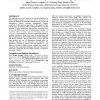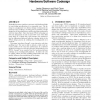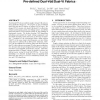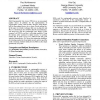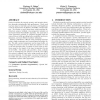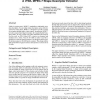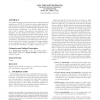FPGA
2004
ACM
14 years 9 months ago
2004
ACM
FPGA
2004
ACM
14 years 9 months ago
2004
ACM
This paper presents a new approach to timing optimization for FPGA designs, namely incremental physical resynthesis, to answer the challenge of effectively integrating logic and p...
FPGA
2004
ACM
14 years 9 months ago
2004
ACM
Embedded systems combine a processor with dedicated logic to meet design specifications at a reasonable cost. The attempt to amalgamate two distinct design environments introduces...
FPGA
2004
ACM
14 years 9 months ago
2004
ACM
FPGA
2004
ACM
14 years 9 months ago
2004
ACM
Field Programmable Gate Arrays (FPGAs) are an increasingly popular choice of platform for the implementation of cryptographic systems. Until recently, designers using FPGAs had le...
FPGA
2004
ACM
14 years 9 months ago
2004
ACM
Pattern matching for network security and intrusion detection demands exceptionally high performance. Much work has been done in this field, and yet there is still significant roo...
FPGA
2004
ACM
14 years 11 months ago
2004
ACM
Unlike its predecessors, MPEG-7 standardizes multimedia metadata description. By providing robust descriptors and an effective system for storing them, MPEG-7 is designed to provi...
FPGA
2004
ACM
14 years 11 months ago
2004
ACM
FPGAs normally operate at whatever clock rate is appropriate for the loaded configuration. When FPGAs are used as computational devices in a larger system, however, it is better ...
FPGA
2004
ACM
14 years 11 months ago
2004
ACM
Moore’s Law states that the number of transistors on a device doubles every two years; however, it is often (mis)quoted based on its impact on CPU performance. This important co...
FPGA
2004
ACM
14 years 11 months ago
2004
ACM
We present the design of a high-performance, highly pipelined asynchronous FPGA. We describe a very fine-grain pipelined logic block and routing interconnect architecture, and sh...

